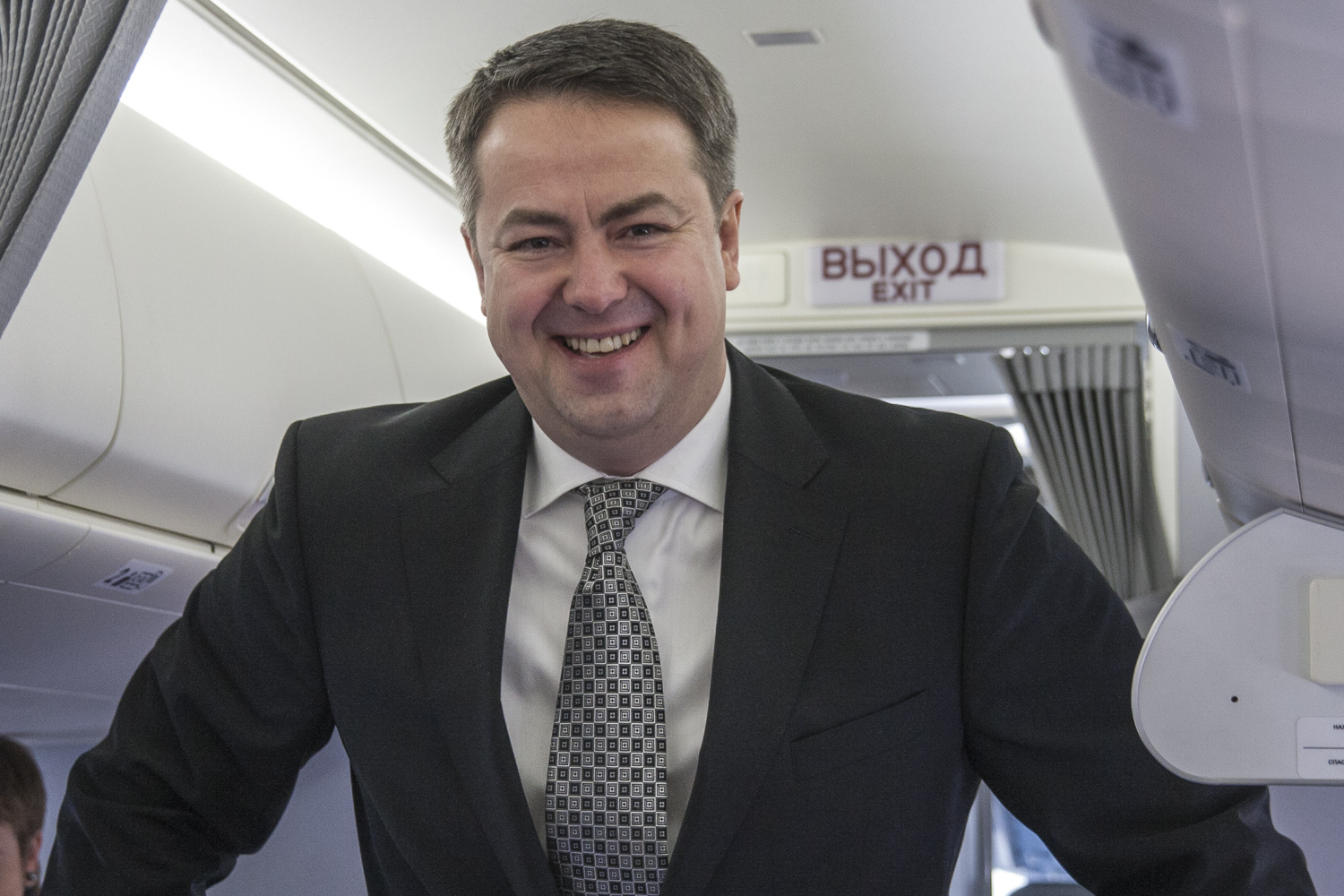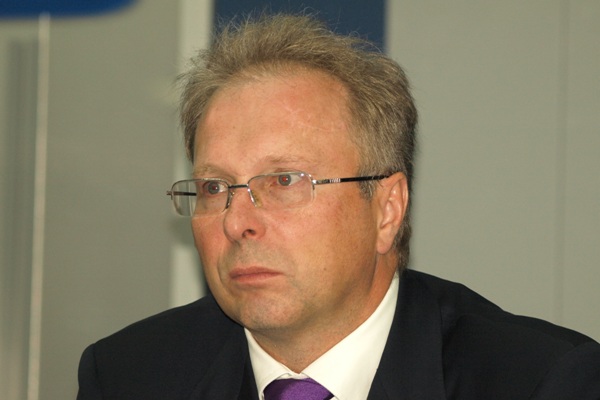Airlines seem to be interested in the type, too. Many of them have already had a chance to inspect the aircraft on display at one of the major aviation shows round the world. During 2015, the SSJ100 exhibited at Aero India, Le Bourget and MAKS. More recently, Sukhoi’s partner Superjet International (SJI) brought SSJ100 S/N 95065 in the colors of Mexican airline Interjet to Dubai Airshow. A number of local operators grabbed the opportunity to inspect this airplane that features a new Pininfarina interior. So far, Interjet is the Superjet’s only Western operator. Its fleet includes sixteens aircraft out of thirty on order.

Dubai Airshow’2015 was the first international expo where the aircraft appeared after UAC executive board approved of the renewed business plan. The corporation’s president Yuri Slyusar commented that this new version of the business plan is “more realistic”, as it calls for 595 SSJ100 sales through to 2031 (compared to 800 previously). Of those 82 would come in Basic (SSJ100-95B), 331 in Long Range (SSJ100-95LR) and 140 in an enlarged seating capacity version (for 110-125 passengers). The rest of 42 are business version.
Sales are to be boosted through use of such tools as wet lease. It is believed that this tool will enable a potential customer to assess the type on its network of routes and to make sure the aircraft performs as advertised. Besides, this way is that of lower risks for the intended customer in decision making process whether to buy such aircraft or lease them.
“For the year of 2015, our plans are more realistic, they are in line with manufacturing rates. From 17 to 20 aircraft will be produced this year, while the number of sales will total 27. Plans call for 25 sales in 2016 and 34 in 2017”, UAC president said.

The Superjet can be made more competitive through a more flexible approach to vendor items. “Today’s baseline version of the Superjet comes with a large number of things that are not necessary for all customers”, Slyusar said. “Therefore, there is a possibility to somewhat simplify the baseline version so as to offer it to those customers who are not looking for that sophisticated onboard systems. At the same time, some of the things can still be available as options. This shall make it possible for customers to buy the airplane at more attractive rates”.
More attention should be paid to restructuring and perfecting the after sales support service. This would involve setting up additional and better-stuffed depots of spare parts, extending network of MRO partners, and introducing modern logistic schemes.
In addition to the aforementioned measures aimed at improving competitiveness of the aircraft and aftersales support system, UAC promises SSJ100 customers some attractive finance packages. “These are the main priorities for us”, Slyusar said. “We must demonstrate to the airline customers that our airplanes come with proper support package, and that they are able to maintain a high utilization rate. Leasing rates and fly-off price must be attractive, so as the aircraft is able to make money in airline service. Our goal is to sell the aircraft cheaper than the completion and yet stay profitable”.

In addition to the Russian domestic and CIS market, UAC sees the following regions as the main markets for the Superjet sales: Europe, Latin America, Southeast Asia, Middle East and China.
In the view of “serious competitors” already present in the global marketplace, UAC aims to challenge them with attractive sales packages for the Superjet. These shall be suitable for both large, established airlines (like Interjet, Mexico’s second largest carrier with 16 Superjets already in operation and 14 more on order), and for startups.
Among various projects invented to attract new customers, there is a wet lease program developed by Ilyushin Finance Co. Under it, an intended customer is given an aircraft in wet lease for six months. This term is enough for the airline to make sure that the Russian airplane demonstrates its advertised performance. Consequently, the customer gets a solid base for the decision-making process, whether to acquire such aircraft or to take them on financial or operating lease terms.
The wet lease option enables an intended customer to temporarily use some aircraft by hiring them from other airline already operating the type. The aircraft comes with the flight crews and maintainers, as well as the obligation of the Russian side on complete operations support, including maintenance and repair as necessary. This is similar to western practice known as ACMI (Aircraft, Crew, Maintenance, Insurance).

IFC offers the wet lease program to interested airlines outside of Russia. The Voronezh-based lessor has teamed up with Red Wing airline based in Ulianovsk. They two are being long standing partners with a history of co-operational projects. Today, in addition to four Superjets, Red Wings operates eight Tupolev Tu-204-100 narrow body jetliners, seven of which are leased from IFC. Furthermore, the latter is to become Red Wings’ main shareholder, following the principle decision of UAC control board to hand a 74% stake in the airline over to the lessor. When complete, this move will bring Red Wings and IFC even closer.

Touching on the theme of the wet lease project, Red Wings general manager Eugeny Klyucharev said: “The core idea is that we would, initially, operate in the interests of a foreign airline, making use of our won aircraft, pilots and ground personnel. This would allow the foreign airline to get acquainted with the airplane, to understand better how it performs on real routes and what it gives to the airline and its passengers. After a while, they would begin to realize whether this aircraft is worth further consideration or not. Only after that, the airline either signs or does not sign a leasing contract or a direct purchase agreement. So, our role is to help marketing this type internationally. Besides, we also pursue some commercial benefits”.
Speaking to journalist on closure of the Paris airshow 2015, IFC general manager Alexander Roubtsov said that during that show he had meetings with five airlines. They were offered Superjets in wet lease for six months, complete with crews and technical assistance from Red Wings. “Few would agree to buy a new type. Our offer enables potential buyers avoid some risks. The airline, which has attested the type on its routes, is better positioned to make a weighted decision whether to buy some”, according to Roubtsov.

Shortly after Paris, IFC made a next step. At MAKS’2015 in August, IFC, Red Wings and Sky Angkor Airlines of Cambodia signed an agreement. The Cambodian carrier agreed to take one Sukhoi Superjet 100 in wet lease. After assessment of this aircraft in operation, the airline will decide whether the type meets its requirements. If this assessment ends up with a positive conclusion, Sky Angkor Airlines will take a couple of newly built airplanes in operating lease from IFC. A decision is expected at the year-end. If it is in favor of the Superjet, two such aircraft will be delivered in 2016. Similar schemes have been discussed with a number of Asian airlines, including those from Cambodia, Vietnam and Thailand.
IFC has amassed rich experience of cooperation with foreign customers through various lease projects, including those involving funding through the mechanism of export encouragement. Over a dozen of Ilyushin Il-96-300, Tupolev Tu-204-100E/CE and Antonov An-148/158 jetliners have been placed with foreign airlines and continue in operation.
IFC has placed orders for 28 Superjets. In July 2014, the lessor awarded Sukhoi Civil Aircraft Company (SCAC) a contract for eight SSJ100-95LRs. This deal follows the one for twenty Superjets – in both Long Range and Basic versions - signed in August 2013. Russia’s draft federal budget 2016 contains an expenditure covering state guarantees to be issued in support of a banking credit for hire purchase of twenty Superjets for Aeroflot. IFC is widely viewed as the preferred lessor to structure that deal.
Red Wings is soon to come under control of IFC as a result of the ongoing changes in its shareholding structure. Today, the airline operates four SSJ100-95Bs on operating lease terms. Merely half-a-year after becoming a Superjet operator, Red Wings managed to demonstrate a very high utilization rate - notably higher those for other Russian operators of the type and comparable to that achieved earlier by Interjet. The airline has plans to increase its fleet through addition of more Russian-made aircraft, such as the SSJ100 and Tu-204/214. Among other things, the fleet expansion plans call for hire purchase of five SSJ100s new from the factory. These will feature a high-density cabin arrangement seating 103 economy class passengers.
The Superjet is one of those passenger jet types whose sales shall bring Russia back to the global market as one of the key manufacturing nations. According to UAC president, by 2025 the share of civil aviation products in the corporation’s income shall grow to 50 percent. Other important programs include the MC-21 next-generation narrowbody. Its maiden flight is planned for 2016 and certification for 2018. The Soviet-era Ilyushin Il-96 widebody and Tupolev Tu-204/214 narrowbody will remain in production until 2023-25, however, with a planned annual output of two-to-three airframes of each type.
IFC has placed orders for 28 Superjets and 50 MC-21s and is widely viewed as the preferred lessor to structure deals with both local and foreign airlines on these and other types in the UAC product line.











